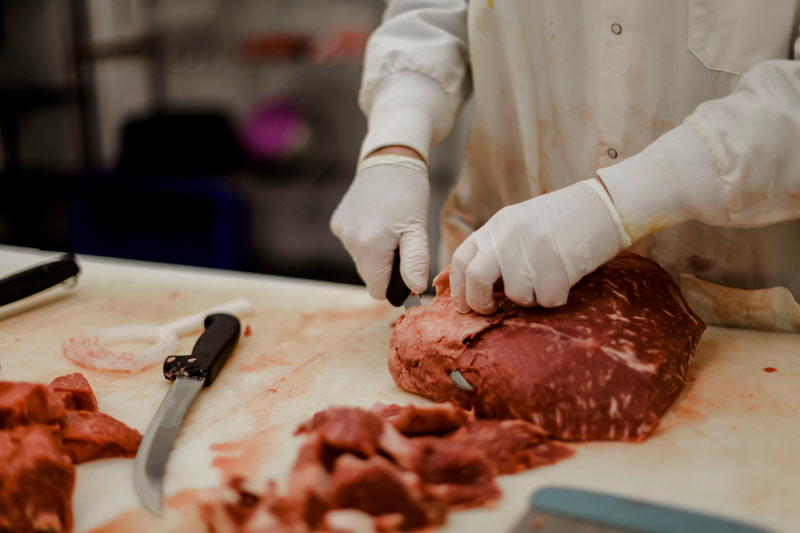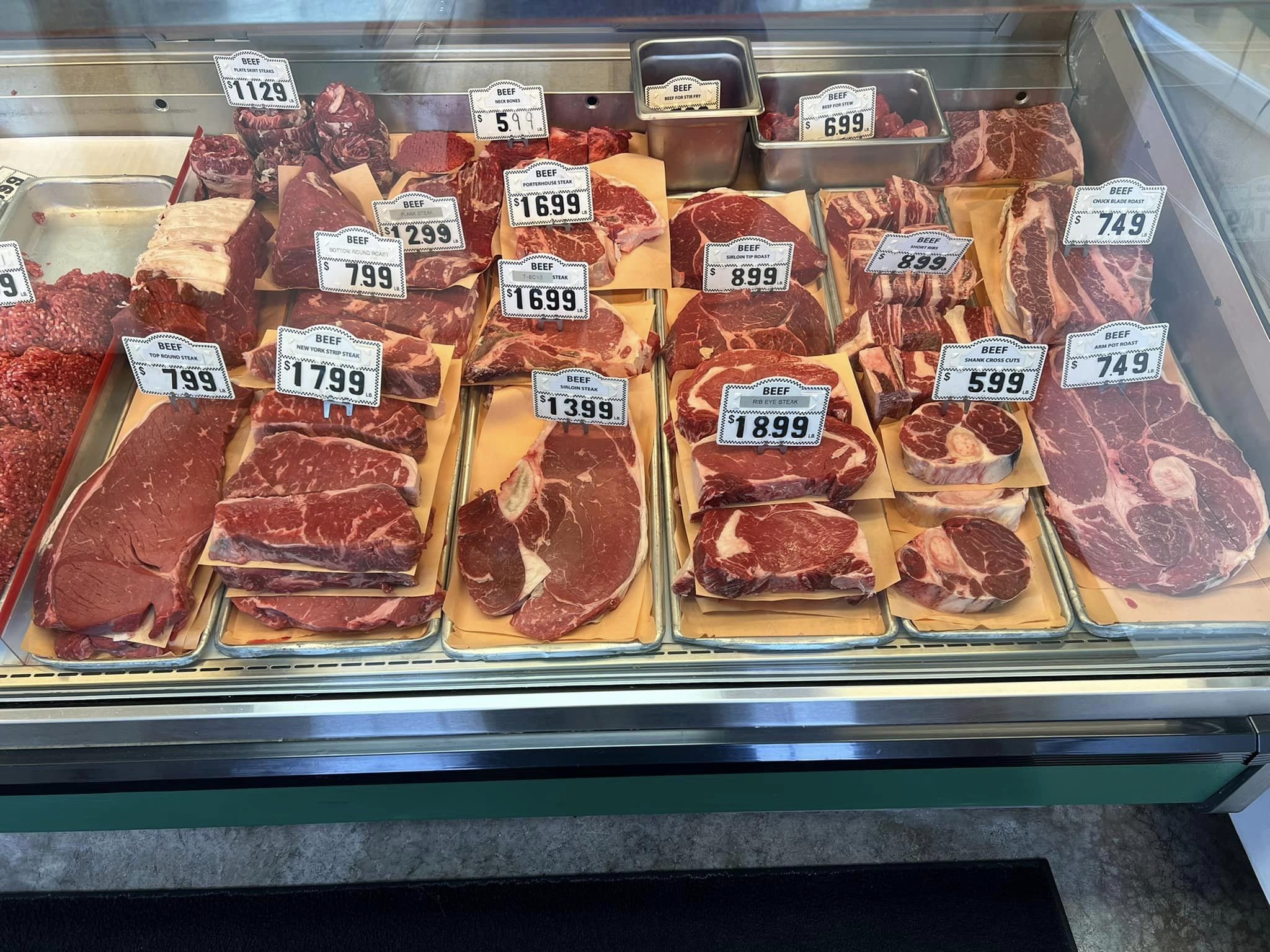Delve into Bagley Farms Meat Market: Quality Meats, Unrivaled Flavor
Delve into Bagley Farms Meat Market: Quality Meats, Unrivaled Flavor
Blog Article
Your Comprehensive Resource for Expert Tips on Browsing the Meat Market Scene and Making Enlightened Purchases
Browsing the world of meat getting can frequently seem like a complex maze, with different cuts, qualities, and tags adding layers of ins and out to the decision-making procedure. For those seeking to make informed options and raise their cooking experiences, understanding the nuances of the meat market scene is vital. From deciphering the difference between prime and selection cuts to untangling the mysteries behind various qualifications, a wide range of expert suggestions waits for those happy to untangle the keys of the butcher's domain name. By mastering the art of selecting fresh, quality meat and learning to engage efficiently with butchers, individuals can not only enhance the flavors on their plate but also make positive decisions that line up with their values and preferences.
Comprehending Different Cuts and Grades
When it concerns buying meat, recognizing the distinctions in between different cuts and grades is important for making notified options at the market. The cut of meat refers to the particular muscle group where the meat is sourced, while the grade is a top quality classification based on aspects like marbling, tenderness, and maturation of the animal. Prime quality meats have the highest degree of marbling, making them tender, juicy, and flavorful, yet they also often tend to be much more pricey. Choice quality meats are slightly leaner with much less marbling but still use high quality for a reduced cost point. Select grade meats have the least marbling, making them leaner but possibly less tender. It's vital to consider the food preparation method when choosing a cut and quality of meat-- for instance, well-marbled cuts like ribeye are excellent for grilling, while leaner cuts like sirloin may be far better suited for roasting or braising. By recognizing the differences between cuts and qualities, consumers can make more enlightened decisions when buying meat.
Picking Quality and fresh Meat
To make sure ideal taste and safety in your dishes, it is vital to very carefully choose fresh and quality meat when purchasing at the market. When selecting fresh meat, look for cuts that have a lively color, company appearance, and are not slimed but damp.
Along with appearance, think about the resource of the meat. Choose for products from trusted suppliers understood for their premium requirements. Organic, grass-fed, or pasture-raised options might likewise show much better top quality meat. Inspecting for appropriate labeling, such as USDA qualifications or qualities, can even more ensure you of the meat's high quality and safety and security. By being attentive in your selection process, you can take pleasure in safe and tasty dishes made from fresh, premium meat.
Decoding Labels and Certifications
Recognizing the tags and certifications on meat items is important for making informed decisions regarding the top quality and origin of the meat you purchase. When navigating the meat market scene, it is essential to look for labels such as "USDA Certified Organic," which suggests that the meat was created adhering to rigorous natural standards without using synthetic pesticides, prescription antibiotics, or hormonal agents. An additional vital tag to expect is "Grass-Fed," which means the animals were fed a diet mainly containing turf or forage. This label commonly shows a leaner item with greater degrees of omega-3 fatty acids.


Accreditations like "Animal Well-being Authorized" or "Certified Humane" indicate that the pets were raised in gentle problems, with access to exterior areas and ethical therapy. On the other hand, "Non-GMO Project Verified" shows that the meat comes from pets that were not fed genetically customized organisms. By recognizing these labels and certifications, customers can make more moral and sustainable options when acquiring meat products.
Involving With Butchers for Support
Making informed options about the meat you acquire can be additionally enhanced by looking for guidance from knowledgeable butchers who possess beneficial understanding concerning different cuts, top quality, and sourcing practices. Butchers are competent specialists who can supply understandings into the advice ideal cuts of meat for particular meals, recommend alternate choices based upon accessibility or spending plan, and offer guidance on correct handling and storage to optimize freshness and flavor.
Engaging with butchers permits customers to ask questions regarding the resource of the meat, consisting of whether it is locally sourced, organic, grass-fed, or sustainably increased. By cultivating a relationship with a trusted butcher, consumers can get a much deeper understanding of the meat they purchase, guaranteeing that it lines up with their choices and worths.
Moreover, butchers can share cooking suggestions, dish pointers, and also butcher special cuts to meet individual preferences. Their know-how expands past simply marketing meat; they can aid in dish preparation, section sizing, and provide recommendations on complementary ingredients to create all-around and tasty description meals - Bagley Farms Meat Market. By leveraging the understanding and experience of butchers, customers can make even more enlightened choices when navigating the find more information meat market scene

Making Best Use Of Worth and Budgeting
When thinking about optimizing value and budgeting in the meat market, it is necessary to evaluate the price per offering and discover economical cuts that still supply excellent taste and quality. By recognizing the cost per offering, consumers can make enlightened decisions concerning which cuts of meat provide the ideal value for their spending plan.
Another method for budget-conscious buyers is to capitalize on sales, discounts, or mass buying alternatives. Purchasing wholesale and freezing parts for later usage can help minimize total costs per offering. It is additionally useful to construct a relationship with regional butchers or meat suppliers, as they may provide unique bargains or discounts to devoted consumers. By being mindful of expense, checking out different cuts, and leveraging discounts, consumers can extend their meat spending plan without sacrificing quality.
Final Thought
Finally, recognizing the numerous cuts and qualities of meat, picking fresh and top quality items, translating tags and qualifications, looking for support from butchers, and making the most of value and budgeting are vital steps for navigating the meat market scene and making informed purchases. Bagley Farms Meat Market. By following these specialist pointers, customers can make knowledgeable choices when buying meat and ensure they are getting the very best worth for their money
When it comes to buying meat, understanding the differences in between different cuts and grades is important for making informed selections at the market. The cut of meat refers to the details muscle mass group from which the meat is sourced, while the grade is a top quality classification based on elements like marbling, tenderness, and maturation of the animal. It's important to take into consideration the food preparation technique when selecting a cut and quality of meat-- for example, well-marbled cuts like ribeye are fantastic for barbecuing, while leaner cuts like sirloin might be better matched for roasting or braising.Understanding the tags and accreditations on meat items is crucial for making informed choices regarding the quality and beginning of the meat you purchase. When browsing the meat market scene, it's essential to look for tags such as "USDA Licensed Organic," which indicates that the meat was created following rigorous organic criteria without the use of artificial pesticides, anti-biotics, or hormones.
Report this page